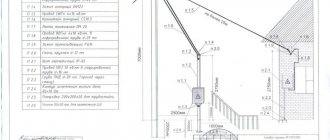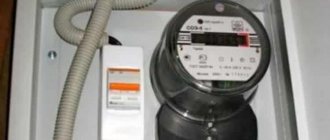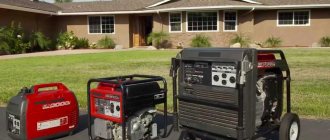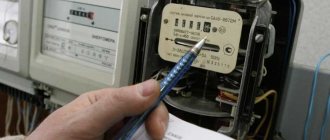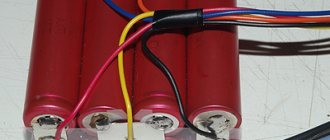Let's make a gas generator together with our own hands
Gasoline generator is a power plant with two-stroke or four-stroke gasoline engines, into which an asynchronous or synchronous alternating current generator can be installed.
When there are frequent power outages, a DIY gas generator is the ideal solution to maintain the flow of electricity. A gas generator is no less necessary for industrial purposes, for example, when working with a welding machine. The average operation of the device with a full tank of fuel can vary from 5 to 10 hours depending on the power output and fuel consumption.
- Design features of the equipment
- We do it ourselves
- Stages of assembly of the unit
- All the pros and cons
- Expert advice
What UPS are used to ensure uninterruptible power supply?
UPS can be divided into three categories: Off-line (inverters), Line-Interactive and On-line. Let's look at how they differ in the context of providing uninterruptible power supply paired with or without a generator.
Off-line
when the main power is turned off, they turn on within 10–20 ms. This is enough to notice the light blinking, but in many types of equipment this does not lead to a temporary stop. This type of low-power power supply is suitable for non-critical loads: monitors, office laptops, printers, and other office equipment. Powerful Off-line UPSs (aka inverters) automatically provide power from batteries, and when the main power is restored, they switch to battery charging mode and simultaneously power the load.
Line-Interactive
is an improved Off-line version, complemented by a voltage stabilizer and an interference filter. The operating principle and scope of application are similar.
On-line
provides the load with the highest quality power due to the double conversion system. First, the UPS converts alternating current into direct current, and the inverter converts direct current into alternating current. But most importantly, there is zero time required to switch to batteries in the event of a main power failure. The equipment will not be able to identify the switching moment and will continue to operate normally. Accordingly, On-line UPSs are suitable for those enterprises where stopping equipment even for a split second can be critical. For example, the use of On-line systems is a fundamental condition for powering gas heating boilers without an automatic start function.
What kind of gasoline to pour into a gas generator
In most cases, A92 fuel is best suited for gasoline generators. In practice, gasoline with a higher octane number does not provide any great benefits, and its cost is significantly higher. When using a four-stroke gas generator, fuel must be poured into the tank in its pure form, while to refuel a station with a two-stroke engine you will need to mix gasoline and engine oil. This procedure is performed to ensure reliable and stable operation of the engine, extending the operating period and reducing fuel consumption. It should be noted that gasoline generators with two-stroke engines have much more toxic emissions than four-stroke engines. When choosing oil for a generator, it is necessary to take into account that they can be summer and winter, as well as mineral or synthetic, which affects their viscosity and fluidity under different conditions. Before purchasing and using oil, be sure to read the recommendations and advice of your power plant manufacturer.
In most cases, gasoline and oil for refueling two-stroke engines are pre-mixed, outside the equipment, but some models of gasoline generators are equipped with an automatic mixing system.
- Model:
EP 25000 TE in container with AVR - Power:
16 kW - RUB 1,079,740
- Model:
AB10-T400-VM111E in container - Power:
10 kW - RUB 291,690
- Model:
LT 3500 CL - Power:
2.5 kW - 19,600 rub.
Restrictions
The question of how to increase the power of a gas generator arises when the equipment simply does not start, although the generator is working at full capacity. Of course, you will find a lot of advice about how to rewind the rotor winding with a larger diameter wire with fewer turns, or even some innovative developments for which they offer to pay a certain amount. But let's be honest - in nature there is a law of conservation of energy. If the engine of your generator is not capable of producing more power, then all rewinding efforts will turn out to be a failure. Moreover, they will affect the change in the parameters of the output current and voltage curve, which may adversely affect the operation of the connected equipment.
How to choose a gas generator
A gasoline generator (or fuel energy generator) is an autonomous portable power station that is used in construction, welding and installation work, and in everyday life as the main and additional power source. Depending on the model, the unit allows you to connect one or more electrical appliances at the same time. In this article you will learn how to choose a gas generator for welding, power supply to your home, workshop or workshop, and which brands are most popular among Russian users.
Depending on the model, from 2 to 4 sockets with a voltage of 12, 220 or 380 V can be installed on the generator body for connecting various electrical appliances. Not all generators can be connected to any device. Welding electrical equipment requires a special gas generator for welding. It differs from the usual one in higher power and low voltage, which is important for welding inverters and plasma cutting machines.
Popular generator manufacturers
Decided to buy a gasoline generator - which brand is better to choose? This is one of the first and important questions facing the buyer. Today, there are a large number of domestic and foreign brands of European and Asian origin on the special equipment market. The most popular brands:
Device and design
In private country houses, on summer cottages in villages, you can very often observe a loss of electricity for several hours or even days in the winter season. An energy generator is an ideal option for maintaining the functionality of household appliances in the house, but sometimes in the harsh winter an emergency may occur and your generator will stop working.
This extremely unpleasant situation requires quick repair, but we have a separate article for it. Now we will analyze the design of the gas generator and its components.
How to choose a generator for your home: power calculation, phases, engine type
Finally, you asked yourself this question - what will happen if the lights are turned off? There are a lot of unpleasant things - the house will defrost, information will disappear, production will lose power, a pump, machine will stop working, etc.
And... You decided to acquire your own independent source of electricity (generator, diesel generator, mini-electric power station, gas generator, etc.).
Do you want to fully provide yourself with electricity or only provide the most basic needs: lighting, refrigerator operation, heating and/or alarm system support, water pump, etc.?
Therefore, the first question will be the rated electrical power (PRP) of the generator (generator set) you are purchasing.
You must determine for yourself which consumers will be connected to the generator at the same time. It is best to check the power of consumers using their passport data.
To calculate the power of the selected generator, take triple the rated power of the electrical appliance with the largest electric motor, add to it the power of all other active consumers (lighting, electric stove, kettle, etc.).
The resulting power must be multiplied by the one-time use coefficient (or demand coefficient) equal to 0.6-0.8 - this is the power of the generator you need.
The second question that you need to decide: should your generator (diesel generator, gasoline generator) be 1-phase (230 V) or 3-phase (400 V)?
If you do not have 3-phase consumers at your site and a 1-phase network is connected to your house (dacha), then the choice here is clear: a 1-phase generator.
If you do not have 3-phase consumers, but a 3-phase network is connected to your house (dacha), then you still need a 1-phase power supply unit, since having purchased a 3-phase one, you will be forced to “parallelize” the output into three 1-phase ones. phase lines by analogy with the supply from the external network.
If you have a synchronous generator, then the difference in the load of each winding should not exceed 30%, if the generator is of an asynchronous type, then no more than 60%, which is better, but not entirely good, since it is a big inconvenience to constantly calculate, how many kilowatts and to which phase (generator winding) must still be connected or additionally loaded until an approximate uniformity of phase loading is observed.
And only in the case when there are 3-phase consumers, it is necessary to purchase a 3-phase PG.
The third question is, what engine should your generator be equipped with - diesel or gasoline?
They often ask: “Which is better?”, “What do you recommend?”
This question cannot be answered unequivocally. Each type of engine has its own advantages.
However, if we are talking about electrical power above 15 kVA, then it is impossible to find a generator with a gasoline engine on the power plant market, and diesel engines in this power range are mostly liquid cooled.
— The speed of rotation of the motor shaft is important. For gasoline engines, which are almost all air-cooled, it is 3000 rpm, as is the case for air-cooled diesel engines.
A diesel engine with liquid cooling (antifreeze) has an engine shaft rotation speed of 1500 rpm. Such engines are capable of operating around the clock.
And the noise from them is less than from the same, but spinning twice as fast, so-called “backup generator”, the resource of which is much shorter due to the high speed of rotation of the shaft.
By the way, all gasoline mini-power plants, as well as air-cooled diesel generators, are backup.
- Noise. There are no absolutely silent generators. The fight against noise is traditional - an enlarged muffler and a noise-proof casing. But at the same time, the price increases significantly, as well as the dimensions and weight.
But I want it to launch itself - is this possible?
Autostart. All generators with an electric starter can be equipped with an autostart system. Then human participation in the event of a power failure is reduced to monitoring the fuel.
NO momentary power loss.
Well, one more thing - if it is important that there is no loss of power supply even for seconds, then you need to additionally install a UPS (uninterruptible power supply or UPS).
Coil connection
connection of coils of a single-phase generator Coils of a single-phase generator are connected like this
, the beginning of the first to the output (diode bridge), and the end is connected to the end of the second coil, the beginning of the second to the beginning of the third, the end of the third to the end of the fourth, the beginning of the fourth to the beginning of the fifth coil, and so on until last reel.
Connection of three-phase generator coils
Basic installation recommendations.
Gas generators are installed both indoors and outdoors. If the unit is installed outdoors, it is necessary to protect it from aggressive factors such as precipitation or dirt. The electric unit can be placed in a barn or other outbuilding. Such placement is also optimal due to such properties of the electric generator as fire hazard, noise and the presence of harmful exhausts.
When placing the gas generator inside a residential building, it can be installed in a ventilated basement or garage.
To eliminate vibrations, the generator must be installed on a perfectly flat surface. There are certain requirements for the premises. So, there should not be high humidity here. Otherwise, a short circuit may occur. The generator is installed in a dry place where the sun's rays do not reach. It is necessary to organize high-quality ventilation and air conditioning in the room; this is required for cooling gasoline generators with air ventilation.
It is necessary to exclude the appearance of open flame sources near gas generators. This is necessary in order to minimize the risk of fire, because the generator uses highly flammable fuel. Smoking and working with open flames should not be allowed near gasoline-powered electrical units.
Diode introduction
Observe polarity. There is no crime here, it’s just that if the polarity is not observed, charging will not happen. The diode must be designed for a current of at least 5 A. By the way, it will get very hot, so it is better to install it on a radiator. What should you consider when selecting the type of diode? Voltage drop on diodes: germanium - 0.3...0.7 V, silicon - 0.8...1.2 V. I.e. This is the voltage by which your on-board network will increase. Therefore, by selection we can achieve the “right” voltage in our network.”
Recommendations for use
If you follow simple rules for operating the equipment, it will function stably and for a long time:
- Before turning on, you should make sure that the equipment is in good working order and tight;
- all components must be securely fastened, otherwise the installation will quickly fail due to vibration;
- it is necessary to monitor the oil level and the quality of gasoline;
- Regular cleaning of the air filter is necessary;
- Correct load adjustment is required.
Calculator for calculating the required power of a gasoline generator
There are many cases in life in which the presence of an autonomous power source turns into an urgent necessity. This becomes relevant for residents of populated areas, where the state of the electrical networks is such that drops in the network or even a loss of voltage are by no means uncommon. Sometimes you need a gasoline generator in holiday villages - not all of them have reliable power lines yet. It is of great importance for people who have received plots for development: there is no time to wait for landline lines to be installed - the work must be organized immediately!
Calculator for calculating the required power of a gasoline generator
But how to choose an autonomous power plant so that it can fully cope with all the planned loads, so that the purchase does not bring quick disappointment? A calculator for calculating the required power of a gasoline generator will help the reader with this.
What are they good for?
Gasoline generators are used during emergency shutdowns as a replacement for the current source.
They help out owners of dachas and construction sites where power has not yet been supplied, and provide a decent living for geologists, rangers, reindeer herders, drillers - everyone who is forced to work in hard-to-reach areas. A good assistant for home craftsmen in the country or in the garage. They make it possible to replace manual labor with mechanized labor even where the use of electricity is not available. Lighting, electrical appliances and tools, and household appliances are connected through the generator. When connecting devices, pay attention to the permissible voltage - if the generator is designed for 127 Volts, then devices manufactured for 220 Volts will not be able to operate with the declared power. The uninterrupted operation time of a gas generator depends on the power of the device, the volume of the fuel tank, and the load size
There are models capable of operating under load for up to one and a half thousand hours.
The uninterrupted operation time of a gas generator depends on the power of the device, the volume of the fuel tank, and the load size. There are models that can provide operation under load for up to one and a half thousand hours.
How to reduce noise without tuning
If you'd rather avoid making any changes to the generator itself, there are still ways to muffle the sound.
- Installation as far as possible
It is so simple. The further you go, the less likely you are to hear it, so use longer extension cords if possible.
- Create a Soundproof Box
Assembling a generator box not only prevents sound from spreading, but can also serve as a space to store the generator outdoors.
Remember that fuel-burning generators require adequate ventilation to prevent dangerous levels of carbon monoxide from building up. Fire retardant insulation material is a good material for this.
- Install sound deflectors
Sound deflectors are solid materials that reflect sound waves in a different direction. In some cases they are used to create a more direct line towards you, but in this case you obviously want to adjust the deflectors so that they move away from you and your home.
- Install the generator on rubber
Some noise simply comes from vibrations, so if the alternator shakes less, that can also reduce noise. A simple rubber mat under the generator is enough to reduce vibration or purchase a special anti-vibration mat.
Alternatively, buy rubber feet
The best option is to use several noise reduction methods at the same time. The generator will never be completely silent, but these tricks can reduce the uncomfortable noise level.
Is it possible to increase the power of a gas generator from 50 to 500 W?
Greetings!
I have a question for you. I work at a construction site, we often go to sites that are just under construction, so there is no talk about normal power supply to such areas. We constantly connected lighting equipment from a conventional 50W gas generator. Now more responsibilities have arisen and the power needs to be increased almost 10 times. Tell me, is it possible to somehow convert an existing generator so that it produces 500 W?
